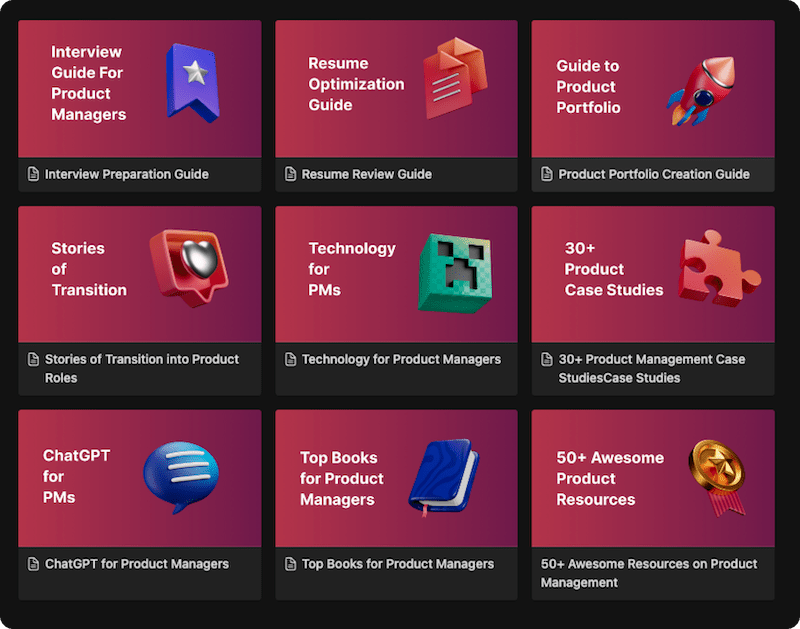They say a caterpillar doesn’t plan to fly- it just knows it’s done crawling.
Maybe, that’s you right now!
You’ve nailed every test case, caught every sneaky bug, and shipped spotless releases. You’re good, really good… at QA. But lately… something’s been fluttering. Not a bug. A butterfly.
Lots of testers dream of moving into Product Management.
But they don’t know how to make that leap? That’s precisely what I’m going to help you with today..
This guide will help you spot what QA superpowers already make you PM-ready, what new muscles you’ll need to build, and get a clear 7-step roadmap, with the skills, tools, courses, and real projects to help you walk the walk.
But hey, why should you even trust me with all this?
The simple answer is I’ve watched it happen, at HelloPM… up very close!
Take Mansi Gupta, who went from logging bugs to leading product at Quintype. Her story (and those of others who’ve made the jump) isn’t just inspiring- it’s proof that the path is real and repeatable.
So, if your inner voice has been whispering, “Can I shift from QA engineer to a Product Manager?”- Then, this blog is your green light!
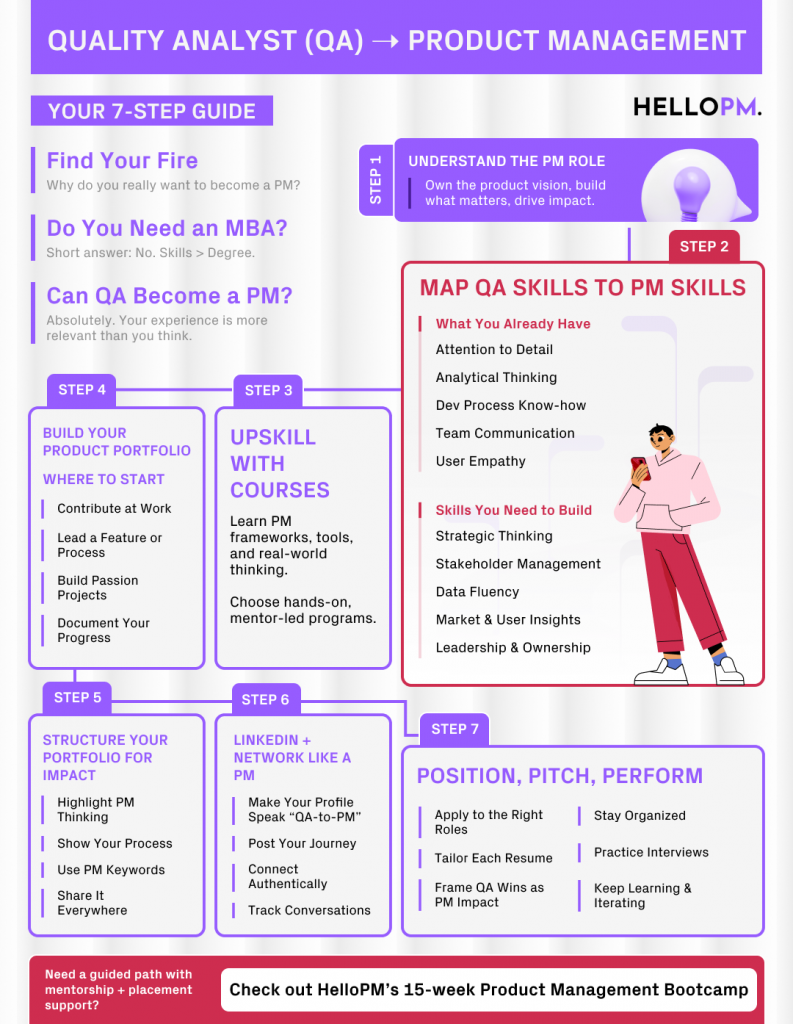
Find Your Fire: Why Product Management?
Before you hit the switch, ask yourself: Why choose Product Management as a Career? What drives you to be a Product Manager?
Is it the higher pay? The shiny title? Or are you genuinely curious about how products are built and how decisions get made? Or is it your desire to switch from finding problems to the one actually solving them- Like becoming a detective who gets to decide how to run the complete show!
For some, the spark is wanting a more visible impact. For others, it’s just boredom- a quiet restlessness that whispers, “I need something new.” Maybe for you, it’s about solving user problems on a bigger scale, or simply feeling like your work connects to something more than ticket numbers.
Whatever your reason, identify it. Write it down. Even if it’s as basic as “I want more ownership” or “I need a new challenge,” knowing your why will anchor you when things get tough.

Do I need an MBA to be a PM?
No! You don’t necessarily need an MBA to become a PM. And you don’t need a shiny badge that says “tech co-founder” either.
Yes, for sure MBA can be a catalyst, but it is definitely not a necessity.
In fact, only about 23% of PMs landed their first PM job right after an MBA. The majority got there by shifting roles or companies.
Can a QA become a PM? Can I handle the PM’s ambiguity?
Short answer: Yes, you are.
Product Managers don’t come from one set path. They come from all kinds of backgrounds: engineering, design, marketing, sales… and yes, testing too.
Because what actually matters isn’t a bullet point on your resume.
Okay, picture this.
You’re at a bustling restaurant. You’re on dish duty (QA), your teammate’s busy chopping veggies (dev). Neither of you is the head chef (PM)… yet.
But hey, either of you could be.
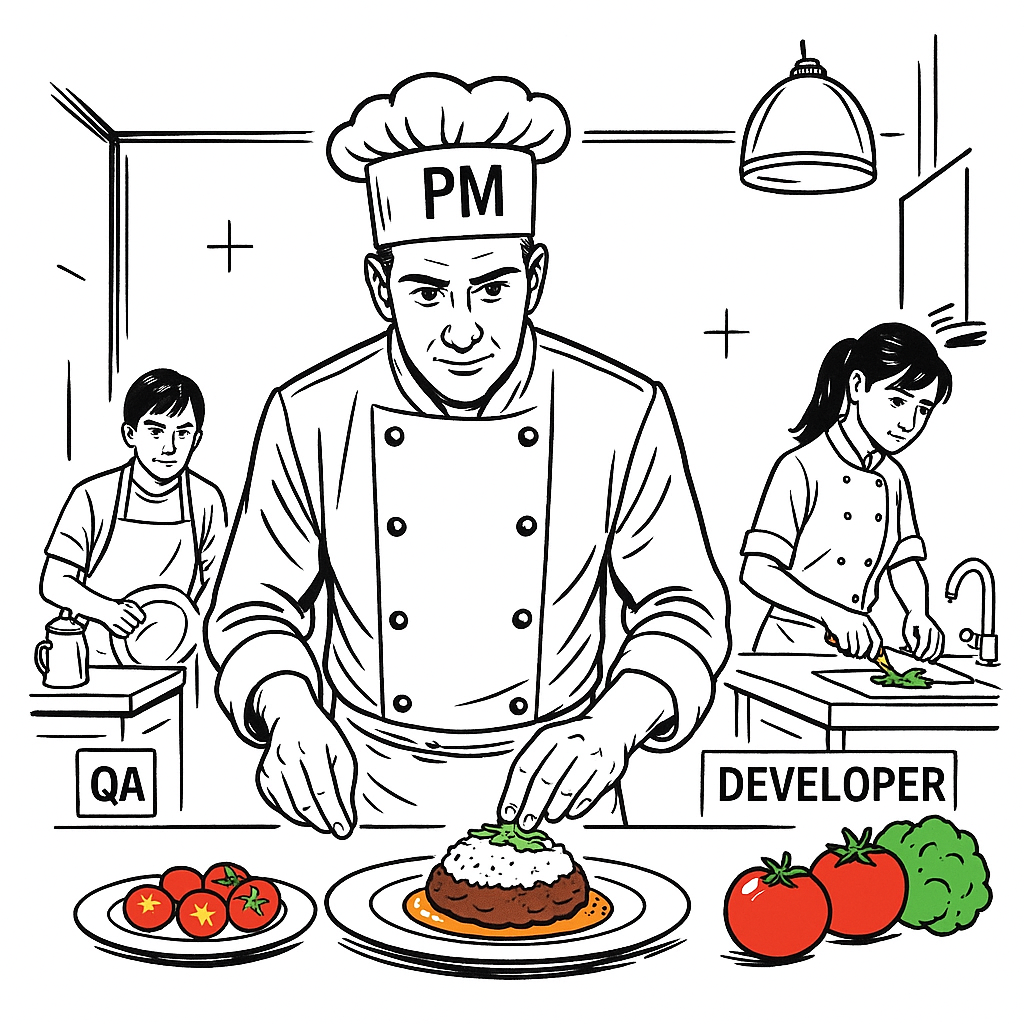
Because it’s not about where you started; it’s about whether you’ve got the hunger to learn the recipe, run the kitchen, and serve up something better every single day. And if that fire’s in you? You’re more than qualified.
Transition into Product Management: How can a QA Engineer move to a Product Manager Role?
Switching from QA to PM might feel like moving from script supervisor to director. And this 7-step guide will help you set the scene, build the cast, and deliver a blockbuster.. So without further ado, let’s get straight to step 1.
Step 1: What Does a Product Manager Do? Understanding the Role of a Product Manager
First things first; let’s talk about product manager responsibilities in the real world.
From my experience and understanding, A Product Manager is the person who holds the vision for why we’re building something, figures out what exactly to build, and works with teams to make sure it actually happens.
They connect the dots between user needs, business goals, and technical constraints.
As a QA, if you’re the eye that catches defects, then PM is the brain that decides what to build. All in all, clear thinking. Constant decisions. Keeping momentum when things (inevitably) get a little messy, that’s the PM life in a nutshell.
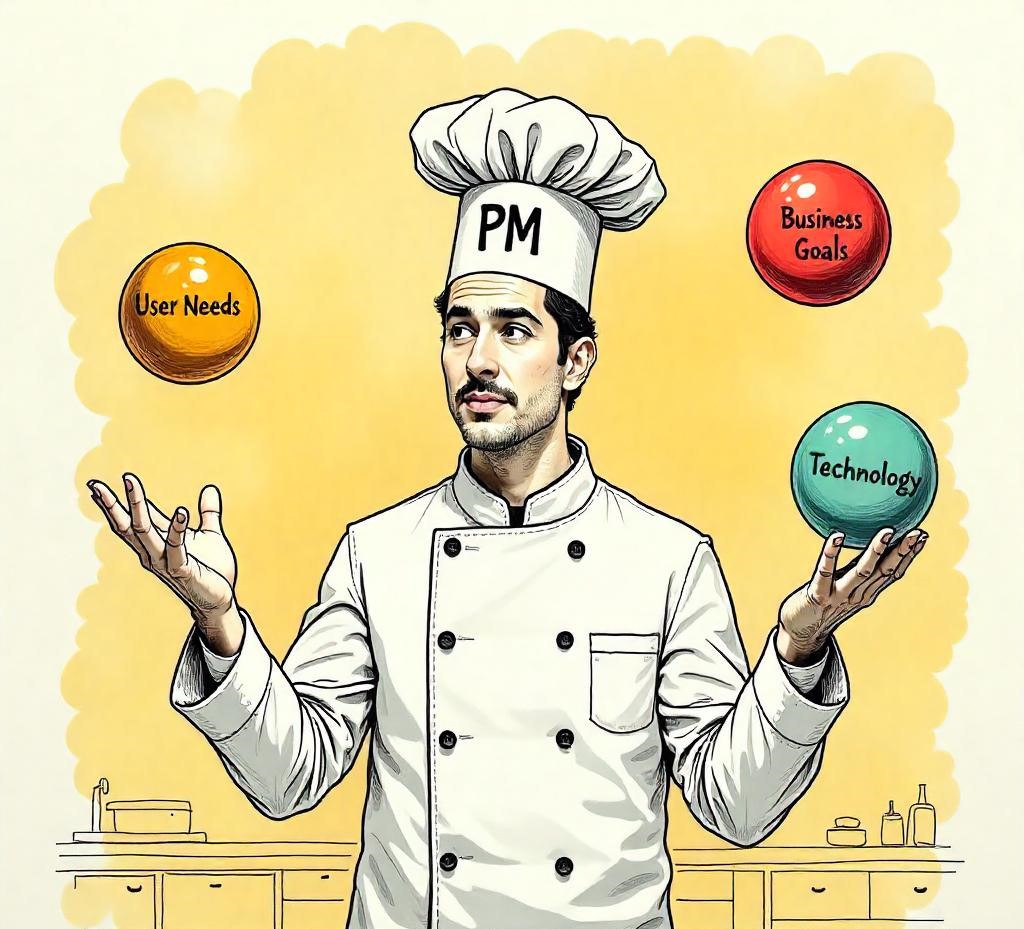
Shape Your PM Learning Stack – Content Diet
Product management is a fast-changing field. To fill gaps in your knowledge, become a voracious learner. Build a content diet of blogs, newsletters, podcasts, YouTube channels, and books. Remember: 82% of PMs say continuous learning is vital for growth. So treat these resources as vitamins for your career, a quick podcast on the commute, or a weekly newsletter over coffee. Over time, this content diet will feed you ideas, frameworks, and the lingo you need (and it’ll also flag opportunities or courses to try).
Step 2: Map Your QA Skills to PM Skills – Similarities and Gaps
At first glance, QA and Product Management look like they live in different worlds. One’s about testing; the other’s about building.
But scratch beneath the surface, and you’ll find more in common than you’d expect.
From QA to Product Manager – The Transferable Skills
If you’re thinking about moving from QA to Product Management, you’re not starting from scratch, far from it. I’ve talked to a bunch of folks on this path, and I can confidently say that you might already have more PM-ready skills than you think. So without beating around the bush, let’s get straight to them, one by one-
- Attention to Detail: As a QA, you’ve probably spent years catching edge-case bugs and those tiny defects others overlook. That means you’ve developed a sharp eye, the kind that spots what most people might miss. (And I used the word might because I’ve seen plenty of folks nail this, profile aside.)
Coming back to the point, this trait of yours is pure gold in a PM role. Whether it’s flagging vague requirements, noticing user pain points, or polishing the final product, this QA instinct gives you a certain edge!
- Analytical Thinking: You know how to break down a complex system and ask, “Why does this fail?” This same analytical skill that you acquired during your QA journey shall help you in solving product problems, analyzing metrics, running A/B tests, and even in evaluating the features’ success.
- Deep Understanding of Development: Years in QA give you a big-picture view of how products are built and shipped. You know the SDLC inside out. This means you’ll quickly grasp technical constraints and workflows when planning features.
- Communication with Tech Teams: Communication is a big part of a PM role. Now, as a QA, you might have spent a significant amount of your QA journey translating between product requirements and developers (and sometimes mediating disagreements). As a PM, you’ll be doing more of the same, just at a bigger scale, i.e., working with engineers, designers, and stakeholders.
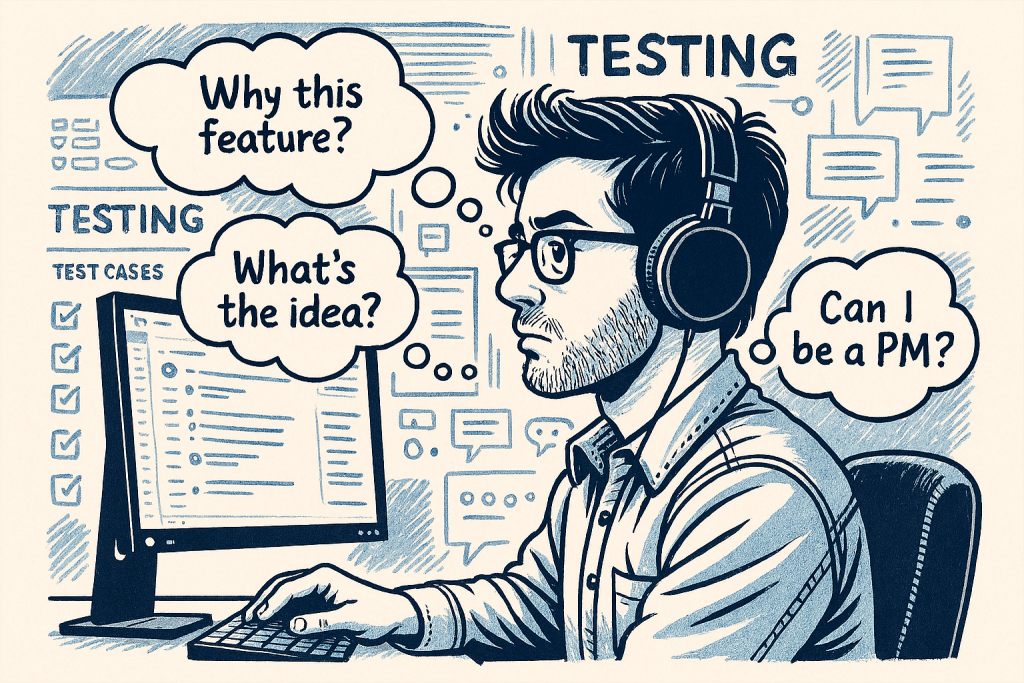
So, your experience collaborating with various stakeholders is already a foot in the door.
- Customer Empathy: Don’t underestimate this. I repeat, don’t underestimate empathy. As a tester, you often think like the end-user, understand their needs, and catch what would frustrate real people. Now the same quality is gonna come in real handy while making product decisions.
Alright, if I had to wrap all this up in one neat little table, then here it comes:
Summary of QA Skills that are transferable to the PM Role
| QA Skill/Focus | How It Benefits Product Management |
| Attention to detail | Catches hidden issues early & ensures quality launches |
| Analytical/problem solving | Informs data-driven choices & clever product fixes |
| Dev process knowledge | Communicates seamlessly with engineers; plans feasibility |
| Quality/customer focus | Keeps product aligned to user needs and satisfaction |
Now, on the flip side, there are some new muscles you’ll need to flex. PMs do stuff, QAs rarely lose sleep over; so let’s tackle those gaps head-on.
Move From QA to Product Management – Learn these Skills
- Strategic Thinking: QA often solves one bug at a time, but as a PM, your job is to think about the big picture. You need to learn how to develop a product vision and roadmap. Questions like “What problem are we solving?”, “Why now?” and “What’s next?” will become part of your everyday playbook. And it doesn’t stop there, you’ll also need to juggle timelines, switching between what needs attention now and what moves the needle long-term.
Sound overwhelming? Fear Not!
Consider taking a practical course on product strategy or hit up well-crafted Product Management newsletters to build this muscle.
- Stakeholder Management: You’ve worked with devs; now expand to all players. Practice explaining concepts clearly to non-technical folks and gather inputs.
PMs often use stakeholder maps or communication plans, so start practicing building those.
- Data Skills: QA skills for metrics help here, but go further. Learn tools like Google Analytics, Mixpanel, or SQL so you can dig into user behavior data. As a PM, you’ll need to take working with data “up a notch”- using multiple sources to decide what to build. Even simple steps like A/B testing or building a dashboard for your QA metrics can prepare you.
- Market & User Knowledge: Move beyond bugs to study your product’s market. Do a quick SWOT or competitor analysis on your current product, or survey friends about a popular app. This will help you write sharper user stories and later work closely with marketing.
- Leadership and Communication: Finally, PMs have this quality of presenting confidently. Practice giving project updates or running a meeting. If possible, volunteer to demo a test result to your team or lead a small brainstorming session.
You already know how to communicate within teams, but one must pay emphasis on handling product demos, client calls, and even motivating a team. You can start now by owning a QA process (like leading retrospectives) and practicing clear, persuasive communication.
Think of this as a top layer of chocolate ganache on your coffee chocolate cake base. You definitely don’t have to master the texture of ganache in a day, but even taking the first step counts!
Don’t know where to start from- check out our free masterclass on Product Management. It is the perfect place to start walking (before you sprint)

Step 3: Take Relevant Courses & Certifications
As per stats, nearly 47% of product managers take formal courses to enhance their skills. They help you learn frameworks and vocabulary quickly.
If you’re just starting out, don’t overcomplicate it. Begin with beginner-friendly PM courses that explain the fundamentals like user research, product growth, and tech basics for PMs. Even a weekend crash course can help you wrap your head around the lingo and key concepts.
Once you’re comfortable with the basics, take it up a notch. A short bootcamp or an intensive program gives you more than just theory-it offers hands-on learning, real mentorship, and a solid project you can actually put in your portfolio. Just make sure it’s built by folks who’ve actually done the job.
Why HelloPM Might Be Exactly What You Need?
You’re not just looking to “learn product.” You’re looking to become a product manager, and that’s where HelloPM stands out.
- Built for career switchers, not daydreamers
Whether you’re coming from marketing, QA, ops, or tech, you’ll find content designed to help you actually make the switch. No fluff. Just what works. - Within 4 Months, you’ll learn all PM Things
You’ll go from “What does a PM even do?” to writing PRDs, building wireframes, cracking case studies, and speaking the language of product-fast.
- Taught by working PMs, not “gurus”
You’re not learning from a YouTube playlist. These are real product managers from top companies sharing frameworks, battle-tested stories, and the “stuff no one tells you.” - A portfolio, not just notes
Walk away with real deliverables-PRDs, product docs, teardown decks, and case studies-that you can actually use in job applications and interviews. - A peer group that pushes you
Your batchmates aren’t just classmates-they’re your crew. Diverse, driven, and collaborative. Many end up working together or referring each other even after the cohort ends. - 1:1 mentor feedback that actually helps
No ghosting here. Mentors review your work, give you real feedback, and coach you through tough spots, cheering you on at every step. - A track record you can trust
With 38+ cohorts and over 1400 alumni, HelloPM isn’t another random bootcamp. It’s a trusted path to the product. You could be next.
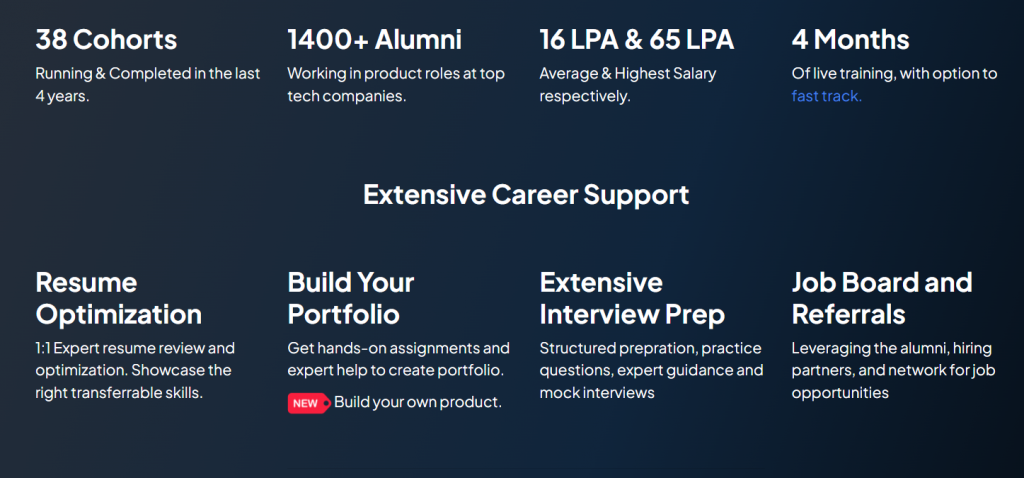
Step 4: Gain Hands-on Experience – Start Building Your Product Portfolio
Actions speak louder than resume words. Begin collecting product-like experience, even before you have the title. Here are some ideas:
- At Work (Internally): Look for opportunities where you can take on product-oriented work in your current role. Volunteer to join a sprint planning meeting or grooming session. Look for Mentors (practicing PMs), and ask them if you can help write a few user stories or acceptance criteria for a new feature. Even proposing test cases is engaging with requirements. Small involvement in planning shows you’re serious.
- Own a Side Task or Feature: If QA tasks involve any decision-making, lean in. Maybe you notice a process improvement (like docs or environment setup)- offer to lead it. Or help improve a minor UI in your product’s test environment (user feedback in action). You could also pick a known issue and prototype a solution (even as a simple slide deck or mockup). The idea: deliver something end-to-end, then point to it in your story.
- Pro Bono or Passion Project: Outside of work, try building a small “product” from scratch. It could be a community app, a personal website, or an open-source contribution. Treat it like a product: research your “users,” sketch features, iterate, and launch a basic version. This shows real PM chops.
- Report Your Progress: Document everything. Write brief case studies or even LinkedIn posts about what you did: “How I added a missing feature to our documentation” or “Project I led to improve test coverage by 30%.” Storytelling matters..
Step 5: Structure Your Portfolio for Impact
Your PM portfolio = your proof-of-work.
Think of it like a product. It’s gotta solve a problem (show off your PM chops) and be user-friendly (clean, clickable, no fluff). Package it however you like- PDF, personal site, even a slick LinkedIn project section.
- Highlight PM Elements: For each case study, emphasize your role in defining goals, planning the solution, and measuring outcomes. Use PM terms: “user research,” “roadmap,” “KPIs,” etc.
- Show Process: Include brief slides or images of wireframes, user journeys, or data charts you made. These visual artifacts scream “product work.”
- Optimize for Discovery: You want recruiters or connections to find your portfolio. Include relevant keywords (QA to PM transition, product management portfolio) on your site. Share it on LinkedIn with a catchy post.
- Link Everywhere: Add the portfolio link to your email signature, resume, and social profiles. The easier you make it to see your work, the more conversations it’ll start.
Don’t forget to sprinkle in those juicy PM keywords so recruiters actually find you, and yeah, bonus points for creativity!
Step 6: Let the World See You Like a PM – Profile & People Strategy
If you’re serious about transitioning from QA to PM, your LinkedIn shouldn’t just sit there- it should work for you. Make it scream “QA-to-PM” everywhere. Think of it as your personal landing page and your networking engine.
Start with Your Profile-
- Headline: Instead of “QA Engineer at XYZ,” try something like: “QA Engineer-> Aspiring Product Manager | Bridging Quality and Product Impact”. This catches the eye and signals your direction.
- Banner: Use a custom banner image. Maybe a mockup of one of your projects or a creative graphic. It visually says, “Here’s my passion.”
- About Section: Write a short story. Highlight your QA achievements and your PM aspirations. Mention key skills (“roadmapping, user research, agile”) and your transition goal. Keep it personal and enthusiastic.
- Experience: Even in your QA job description, weave in any product-related tasks (e.g., “collaborated on new feature planning”). Use bullet points that include PM terms. You can also add any course that you have taken related to product management and build something concrete to showcase.
- Skills & Endorsements: Add skills like “Product Management,” “User Experience,” “Agile Methodologies,” even if you’re just learning them. Endorsements from colleagues (especially engineers or current PMs) can help validate those skills.
Now, Warm Up Your Network Warmly – The Inbound Strategy
Because sometimes, your next PM role is one coffee chat away!
Let’s face it- opportunities don’t always come from job portals.
They come from people. From one curious DM, one thoughtful follow-up, one Slack message that hits the right inbox at the right time.
In fact, 28% of PMs got into their first role through internal moves. And a good chunk more? Cold outreach, community referrals, and that LinkedIn post that made someone go, “Hey… this person gets it.”
So let’s break it down.
- Talk to Real Humans (yes, even on LinkedIn)– Reach out on LinkedIn or Slack to PMs (especially at your company). Let them know you’re interested in them and ask for 15 minutes of their time. But it is important to be genuine: ask about their day-to-day or for advice on moving into PM. Most people are happy to share their story, especially if you’ve done some homework and asked smart questions.
- Use your Company as a Springboard- If you like your current company, your best shot might be an internal move. Companies often prefer to fill PM roles with someone who understands the product already. Talk to your manager or HR about your interest. Even if there’s no formal PM opening, you can ask to shadow the product team or help run a small feature under mentorship.
- Build Your Brand: Start posting your journey on LinkedIn. Write about your journey – maybe “What I learned prototyping my first feature spec” or “3 bugs that became product improvements”. Or you can draft something like “Tried writing my first PRD this weekend – here’s what I learned” or “Curated a mini-competitor analysis for our app”. These nuggets show effort and attract the right connections.
- Be Patient and Persistent: Transitioning takes time. The people we talked to echoed it: be patient, keep learning, and don’t give up. By patience, we mean kindly following up after meeting someone or gently reminding a mentor. Stay visible without being annoying.
- Join a community- There are some super active PM communities out there- the kind that drop job leads, insider tips, and connect you with folks who actually reply. So yeah, hit that subscribe button. Because let’s be honest… your next PM gig could be just one Slack message away.

- Track your Outreach like a Product- Use a Notion doc, Google Sheet, or Trello board. Track who you reached out to, when to follow up, and what you talked about. Warm connections are built on consistent (not clingy) follow-ups.
Step 7: Position, Pitch, Perform-Applications, Resumes & Interview Wins
You’ve built experience, polished your presence, and grown your network. Now it’s time to put it into action and land that PM interview. But just like product work, applying is about strategy, not spray-and-pray.
- Target the Right Roles: Start with companies and products you’re genuinely excited about. Smaller startups might value your hands-on attitude, while big tech may prioritize your process skills. Align your interests (consumer app, enterprise software, etc.) with the company’s domain.
- Customize every application: No single resume works for all. Tailor it for each role.
For startups: Highlight moments where you wore multiple hats, took ownership, or solved user problems independently.
For corporates: Emphasize experience with process, collaboration, metrics, and tools like JIRA, SQL, or documentation workflows.
Always echo the language from the job description. If it mentions roadmaps, stakeholder communication, or experimentation, make sure your resume reflects that.
- Showcase transferable wins
Frame your QA achievements through a product lens, such as
- “Led effort to increase test coverage by 30%” becomes a story of initiative and impact.
- Analyzed bug trends to inform sprint planning- this one shows user insight and data thinking.
- “Collaborated with PMs to review feature specs” becomes proof of cross-functional involvement.
- Track and manage your applications
Use a spreadsheet, Notion board, or Trello to log roles, follow-ups, and interview stages. Some opportunities won’t show up on job portals – that’s where your network and your posts come in. Let people know you’re open to PM roles and actively transitioning. Visibility helps.
Now prep like a PM
Once the interviews roll in, it’s time to show your thinking.
- Do mock interviews: Practice product sense questions, metric breakdowns, and case exercises with a friend or mentor. Treat it like user testing for your storytelling.
- Nail take-home assignments: Whether it’s writing a PRD or designing a feature, structure your answer. Clarify assumptions, show your process, and keep it focused.
- Stay organized: Track interviews, stages, feedback, and next steps. After each round, follow up with a thank-you note that reflects on the conversation and your excitement.
- Keep improving: Treat each mock or real interview as a learning loop. Get feedback, reflect on what worked, and fine-tune your responses.
Think of interviews as final sprints in your transition. You’ve built up project practice and network momentum – now show that you can think like a product manager on the spot.
My Last Two Cents
Transitioning from QA to Product Management isn’t just possible- it’s powerful. Because what do great PMs need? A problem-solving mindset. Ruthless attention to detail. Obsession with user experience. You’ve been living that already.
Now, it’s time to repackage your precision as product intuition. Layer in skills like roadmap thinking, stakeholder storytelling, and data-led decisions. Wrap it all in hands-on experience, and suddenly, you’re not just ready for product management, you’re built for it.
As Mansi (ex-QA, now PM) puts it:
“Start with what you have. Be curious. Network like your career depends on it – because it does.”
Think of this shift like building your own MVP:
Start small. Test fast. Iterate. And never stop shipping your story.
And if you want a turbo boost?
HelloPM’s 15-week Product Management Bootcamp is your runway. Designed by PMs who’ve walked this exact path- it’s part skill-builder, part career-launchpad, part cheer squad.So go on: trade in your test cases for traction metrics. Your journey from QA to PM isn’t a pivot. It’s a power move.
Ready to launch?
FAQ’s
Absolutely. Many PMs come from non-PM backgrounds. Companies value an understanding of customers and problems above all. QA roles give you exactly that, customer focus and problem analysis. With the right approach, your QA experience is a strength, not a setback.
You can create that experience. Take on internal projects (e.g. lead a QA tool upgrade or documentation project) as a pseudo-product. Volunteer for pro bono work (build a small app or run a user survey). Apply your learning in real scenarios: write user stories for a new feature, run an A/B test, or analyze user metrics on something you care about.
Yes, a tester can become a PM. The key areas they need to focus on are strategy and communication. You should practice strategic planning (thinking long-term roadmaps vs day-to-day tasks) and stakeholder management (working with customers, execs, and other teams). Also, up your game in data analysis (using analytics tools to inform decisions) and get a basic grasp of marketing concepts (positioning, go-to-market). Finally, hone your leadership skills: practice running meetings, presenting ideas, and writing clear product briefs. Essentially, aim to learn what a PM does on a daily basis, and you’ll fill those gaps.
Networking is very important. You can utilize LinkedIn to connect with PMs and even have conversations that lead to interviews. Don’t be shy about reaching out – people are often happy to chat when you show genuine interest. Use your current time and resources to build skills and a network, and you’ll be better off.
No, you don’t need an MBA to become a PM. What matters more is relevant experience or training. Instead of an MBA, you could take a focused PM program for structured learning and mentor guidance. Employers care about your product sense and results more than your degree.
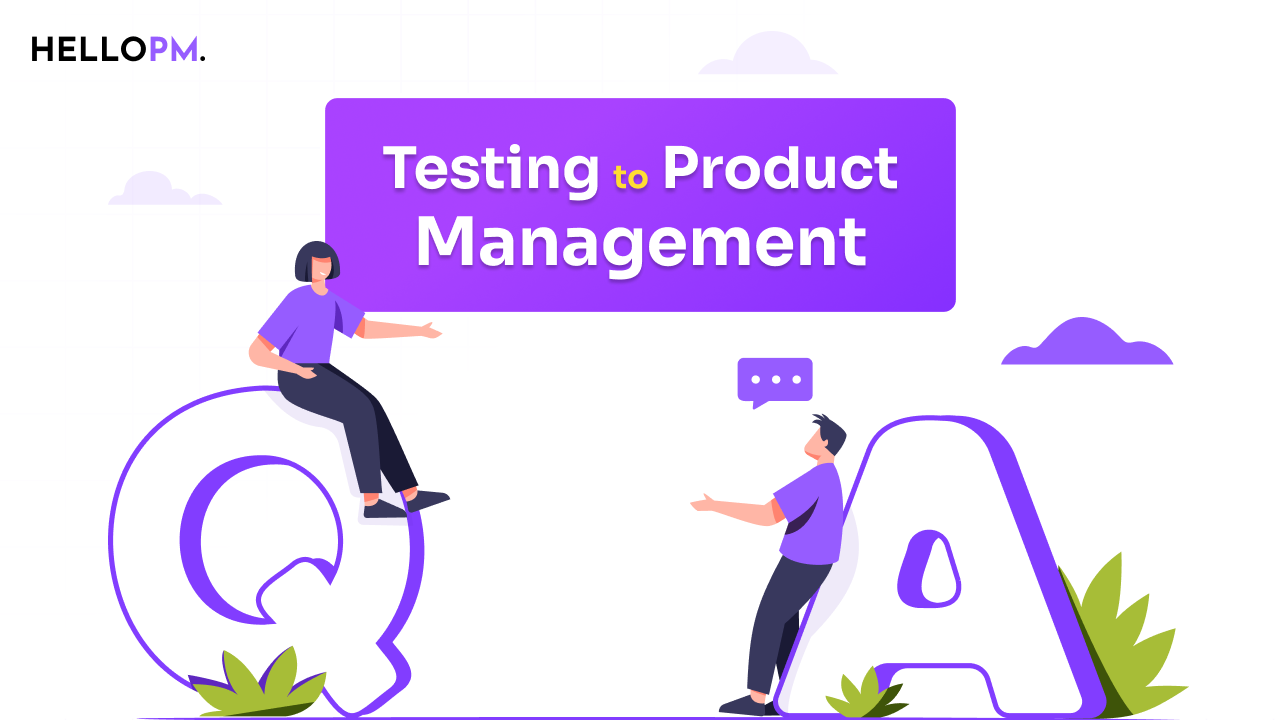
 WATCH HELLOPM COHORT IN ACTION
WATCH HELLOPM COHORT IN ACTION

